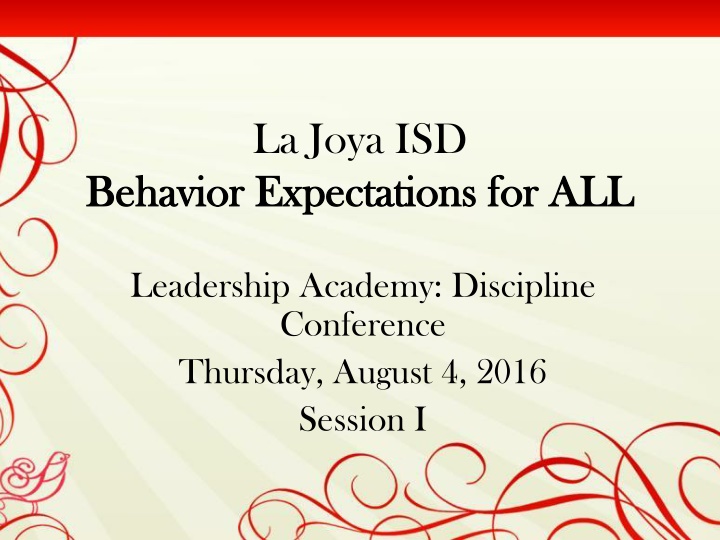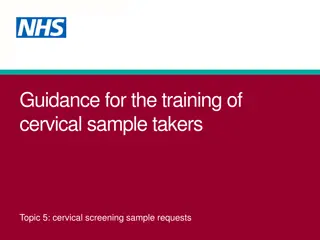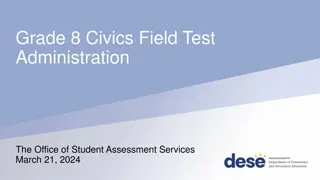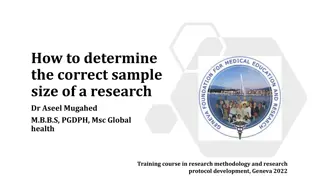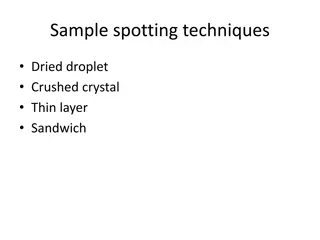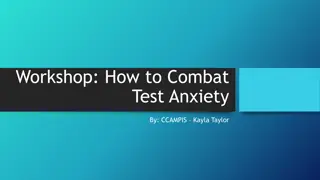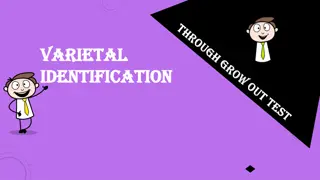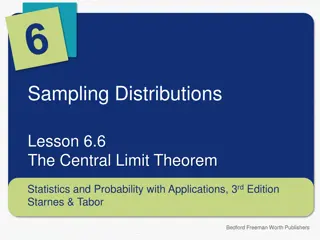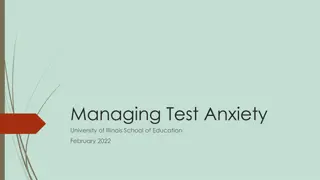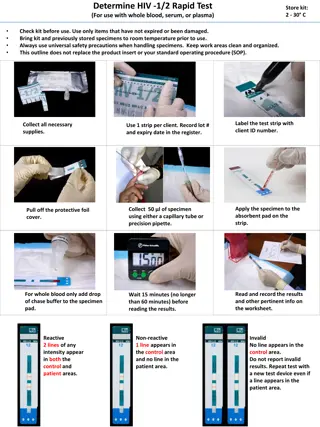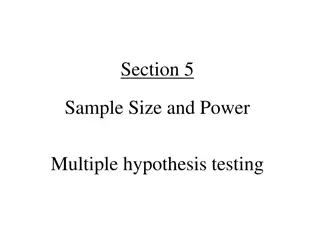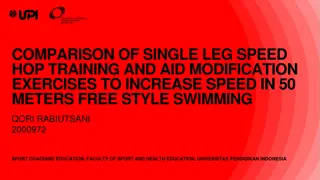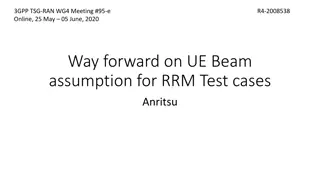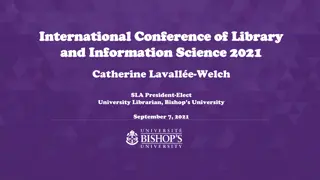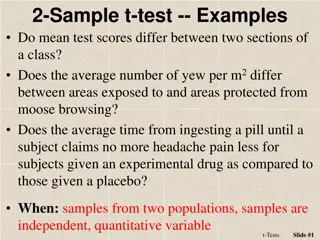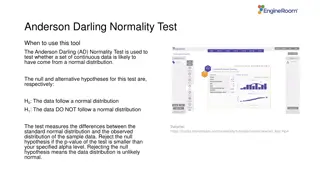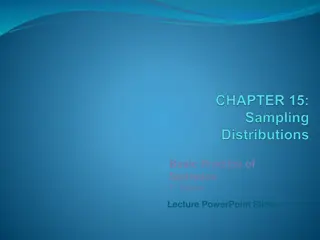Welch's 2-Sample t-Test in R
Welch's 2-sample t-test is a statistical method that allows you to determine if the means of two groups are significantly different, even when the variances of the groups are unequal. This test is useful when the standard 2-sample t-test assumptions are not met. The test works by calculating the difference between the means of the groups, adjusting for uncertainty, and determining degrees of freedom. In R, you can perform Welch’s t-test by following certain assumptions, setting up your data, and interpreting the results graphically. This method provides insights into comparing two groups and is particularly handy in scenarios like comparing the mass of apples and oranges.
Download Presentation

Please find below an Image/Link to download the presentation.
The content on the website is provided AS IS for your information and personal use only. It may not be sold, licensed, or shared on other websites without obtaining consent from the author.If you encounter any issues during the download, it is possible that the publisher has removed the file from their server.
You are allowed to download the files provided on this website for personal or commercial use, subject to the condition that they are used lawfully. All files are the property of their respective owners.
The content on the website is provided AS IS for your information and personal use only. It may not be sold, licensed, or shared on other websites without obtaining consent from the author.
E N D
Presentation Transcript
La Joya ISD Behavior Expectations for ALL Behavior Expectations for ALL Leadership Academy: Discipline Conference Thursday, August 4, 2016 Session I
Behavior Expectations Behavior Expectations for All for All Appropriate behaviors that a student/staff is to exhibit in order to be successful at school. They are taught at the beginning of school with examples and non-examples, modeled, practiced and reinforced on a daily basis.
Behavioral Expectations: Behavioral Expectations: Be Safe Be Safe Be Responsible Be Responsible Be Respectful Be Respectful Students
Behavioral Expectations: Behavioral Expectations: Be Safe Be Safe Be Responsible Be Responsible Be Respectful Be Respectful Teachers
Safety Stations (Duty) Report any unsafe situations. Trainings/Meetings Classroom Organize classroom furniture and technology. Use all material safely. Review safety rules with students. Keep an orderly environment. Be prepared to teach engaging lessons daily. Communicate with parents. Be on time. Know how to work with all students, especially SPED and ELL. Turn in reports/documentation on time. Teach behavior expectations to all students and reinforce throughout the year. Greet all your students. Respect all students. Get to know all your students. Build a positive classroom environment. Model cell phone use Sit appropriately and watch your step. Be Safe After training or meeting, push chairs in and discard of any trash. Wear your identification badges. Be on time to duty. Be on time. Bring appropriate material. Actively participate in discussions and activities. Plan for implementation with fidelity. Communicate new learning with appropriate audience. Dress professionally. Be Responsible Follow/ Reinforce school procedures. Stay at your assigned duty station. Address inappropriate behavior professionally. Keep cell phone off and out of sight. Be attentive to the speaker. Use all electronics such as I pads, laptops appropriately. Keep all sidebar conversations at a minimum. Be Respectful Interact positively with all students.
Behavioral Expectations: Behavioral Expectations: Be Safe Be Safe Be Responsible Be Responsible Be Respectful Be Respectful Office Staff
Be Safe Be Safe Organize office furniture and technology. Report any unsafe situations. Use all equipment safely. Keep an orderly environment. Wear your identification badges. Ensure all visitors sign in. Be Responsible Be Responsible Be prepared for any task at hand. Provide immediate assistance to all visitors. Be on time. Be knowledgeable in all your areas of responsibility. Turn in reports and documentation on time. Assist all campus staff with campus needs. Dress appropriately
Be Respectful Be Respectful Greet everyone. Respect everyone. Get to know all the staff/families. Build a positive office environment. Use a welcoming voice in all your office interactions. Communicate with all visitors in a helpful and positive manner. Keep cell phones out of sight. Keep cell phones out of sight. Be energetic and enthusiastic about your job.
Behavioral Expectations: Behavioral Expectations: Be Safe Be Safe Be Responsible Be Responsible Be Respectful Be Respectful Administrators
Be Safe Be Safe Monitor all areas for safety. Monitor all areas for safety. Report any unsafe situations Report any unsafe situations. Review safety plan and monitor implementation. Review safety plan and monitor implementation. Plan for fire drills and lock downs. Plan for fire drills and lock downs. Keep an orderly environment. Keep an orderly environment. Wear your identification badges. Wear your identification badges. Be Respectful Be Respectful Be prepared for any task at hand. Be prepared for any task at hand. Be on time to appointments and meetings. Be on time to appointments and meetings. Communicate with all campus/district departments. Communicate with all campus/district departments. Follow & reinforce school procedures. Follow & reinforce school procedures. Return parent calls promptly. Return parent calls promptly. Be on time. Be on time. Promptly assist staff when help is requested. Promptly assist staff when help is requested. Be knowledgeable in all your areas of responsibility. Be knowledgeable in all your areas of responsibility. Turn in reports and documentation on time. Turn in reports and documentation on time. Dress professionally. Dress professionally.
Be Respectful Be Respectful Greet all your staff/students/parents. Greet all your staff/students/parents. Address everyone in a professional manner. Address everyone in a professional manner. Interact positively with all staff, students and parents. Interact positively with all staff, students and parents. Get to know your staff/students/parents. Get to know your staff/students/parents. Keep cell phone use to a minimum at school and Keep cell phone use to a minimum at school and out of sight in front of students. out of sight in front of students. Build a positive school environment for everyone. Build a positive school environment for everyone. Be energetic and enthusiastic about your job. Be energetic and enthusiastic about your job.
Classroom Management Classroom management consists of the practices and procedures a teacher uses to maintain the environment in which instruction and learning can take place.
People expect procedures for People expect procedures for everything they do in life: buying everything they do in life: buying ticket at movies, waiting in line at a ticket at movies, waiting in line at a restaurant or store, getting a facial, restaurant or store, getting a facial, etc. etc.
Teaching students the procedures Teaching students the procedures they need to follow in class gives they need to follow in class gives them life skills and makes them life skills and makes teaching less stressful for ALL! teaching less stressful for ALL!
When procedures are in place, When procedures are in place, the teacher can focus on teaching. the teacher can focus on teaching. Students know automatically what Students know automatically what needs to be done. needs to be done. They know when and how to do it They know when and how to do it because you have taught them because you have taught them UNTIL they get it right. UNTIL they get it right.
Classroom management begins Classroom management begins before the first day of school. before the first day of school. - -Wong & Wong Wong & Wong
Engage Engage Discuss your campus procedures for turning in lesson plans, absences, leaving campus early, leaving the classroom, sending a student to the office, etc. How do teachers know this? Do they all follow the procedures? Why or Why not?
Procedures all teachers Procedures all teachers should teach should teach 1. Attention Signal 2. Entering the classroom 3. Leaving the classroom 4. Make up/Late Work 5. Leaving the classroom 6. Homework 7. Phones
Engage Engage 1. Discuss a teacher who has procedures for students in place. How do you know? What evidence do you see? 2. Is student performance/discipline issues tied to procedures in this classroom?
Engage Engage 1. Discuss a teacher who does not have procedures for students in place. How do you know? What evidence do you see? 2. Is student performance/discipline issues tied to lack of procedures in this classroom?
Answer the following Questions Answer the following Questions 1. How do I monitor that teachers are teaching and re-teaching behavior expectations? What feedback do I provide for lesson plans on teaching routines and procedures in a classroom? When will I teach staff behavior expectations and how will I monitor these expectations? 2. 3.
